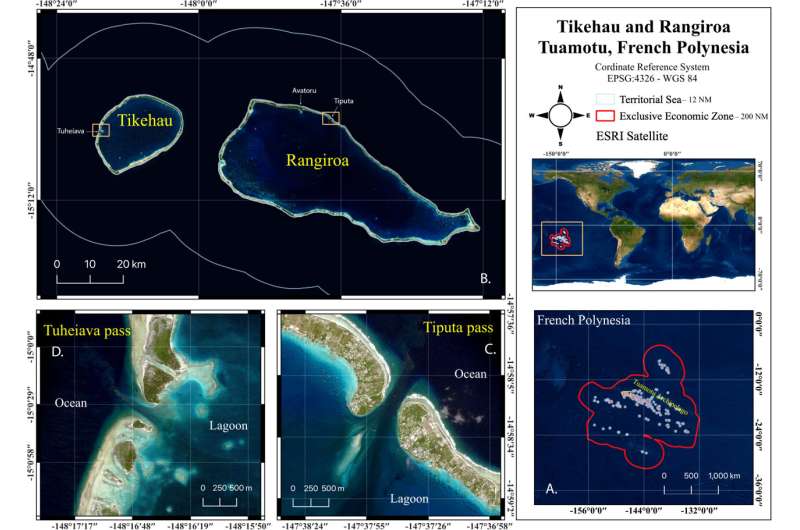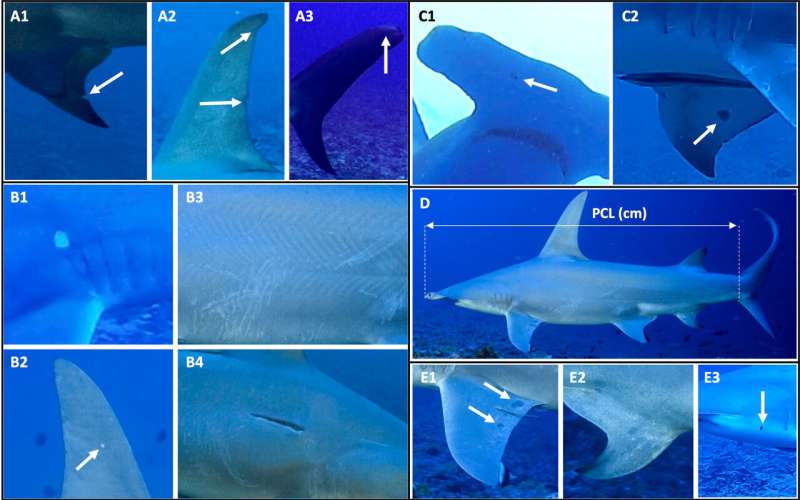September 5, 2023 report
This article has been reviewed according to Science X's editorial process and policies. Editors have highlighted the following attributes while ensuring the content's credibility:
fact-checked
peer-reviewed publication
trusted source
proofread
Why do female great hammerhead sharks gather every summer in French Polynesia?

A large international team of marine scientists are trying to solve the mystery of why a large group of female hammerhead sharks have gathered in two French Polynesian atolls every summer of over the past decade. In their paper published in the journal Frontiers in Marine Science, the team describes their study of the sharks and discusses their theories on why they congregate.
Great hammerhead sharks are the biggest of the hammerheads—they can grow to lengths of four to six meters and weigh up to 450 kilograms. They are known to be voracious hunters but present little danger to humans. They typically live in tropical or temperate zones along shorelines and migrate seasonally, generally toward equatorial waters during winter, and in the opposite direction in summer.
In this new endeavor, the scientists heard about female great hammerheads congregating in atolls in French Polynesia, and they began a research study to find the reason.
In looking at the circumstances surrounding the sharks amassing in French Polynesia, the team found that they had originally been spotted congregating in two atolls during the summers of 2020 and 2021—from December to March, which is summertime in the South Pacific.

Over the ensuing years, the research team was able to identify 55 sharks (54 females, and 1 of unidentified gender). They note that hammerheads, like most sharks are generally solitary swimmers. And despite congregating, the females did not appear to acknowledge the existence of the others around them.
Looking at videos provided by citizen scientists from 2006–19, the researchers were able to identify 30 additional sharks, most of which they could identify as female. They were also able to see that at least half of those they observed were seasonal visitors. And they also found that at least 32 of the sharks returned to the same atoll every year for at least 12 years.
The team was not able to find any single factor that could explain the behavior of the sharks, but they have a few theories. The first is that the sharks are simply following ocellated eagle rays which mate in the same atoll. Such rays are a food source for the sharks. The second involves the moon—peak numbers of sharks coincided with a full moon. They suggest that the full moon makes it easier to spot prey at night.
More information: Tatiana Boube et al, First insights into the population characteristics and seasonal occurrence of the great hammerhead shark, Sphyrna mokarran (Rüppell, 1837) in the Western Tuamotu archipelago, French Polynesia, Frontiers in Marine Science (2023). DOI: 10.3389/fmars.2023.1234059
Journal information: Frontiers in Marine Science
© 2023 Science X Network


















